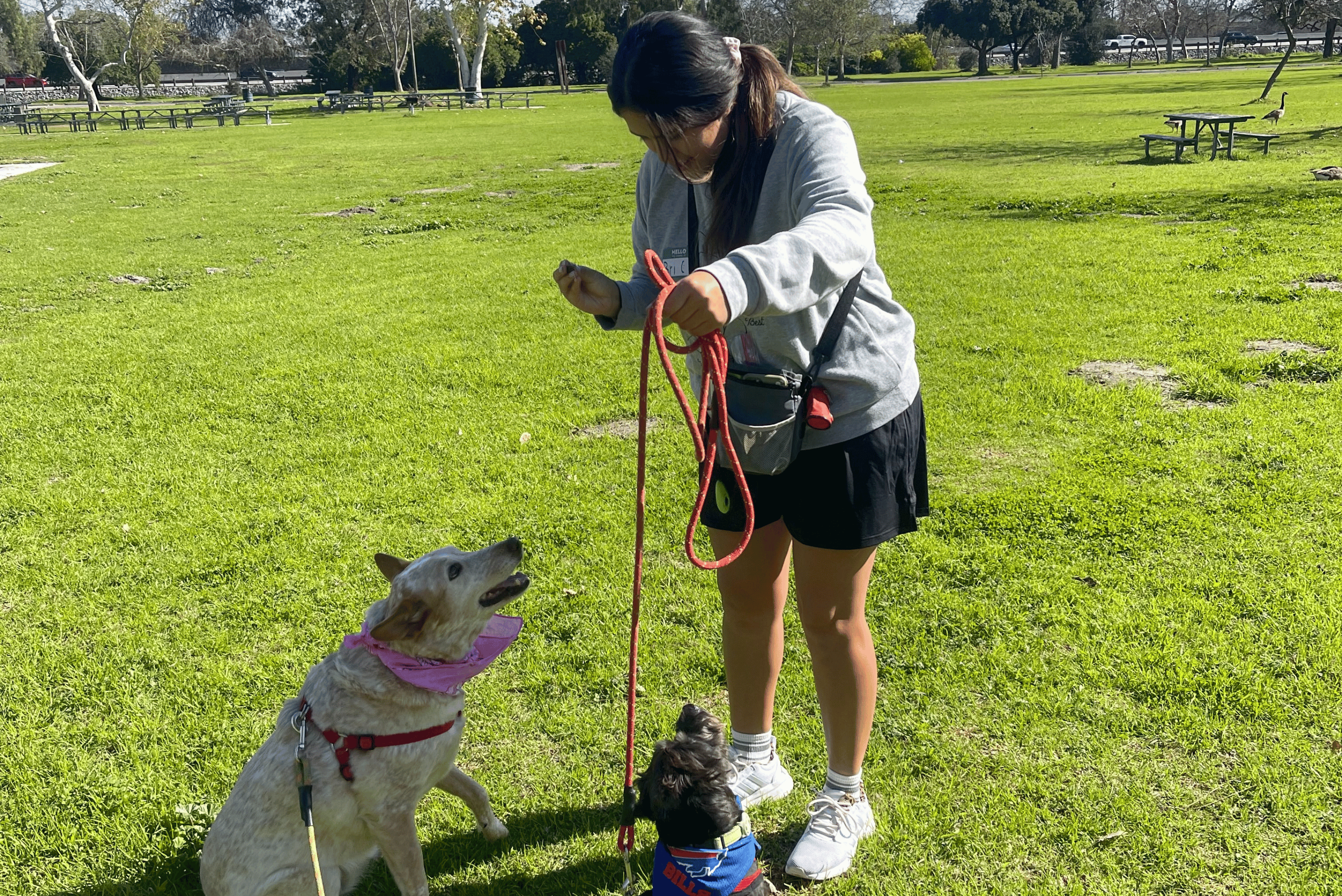A Behind-The-Scenes Look At Our Dog Training Workshop With Local Pet Sitting Team Pet Waggin’
Even professionals can benefit from a refresher course in dog training. That’s why we recently partnered with Pet Waggin’ and hosted a dog training workshop just for their team. We met up in Long Beach’s beautiful El Dorado Park for a session that was as fun as it was educational.
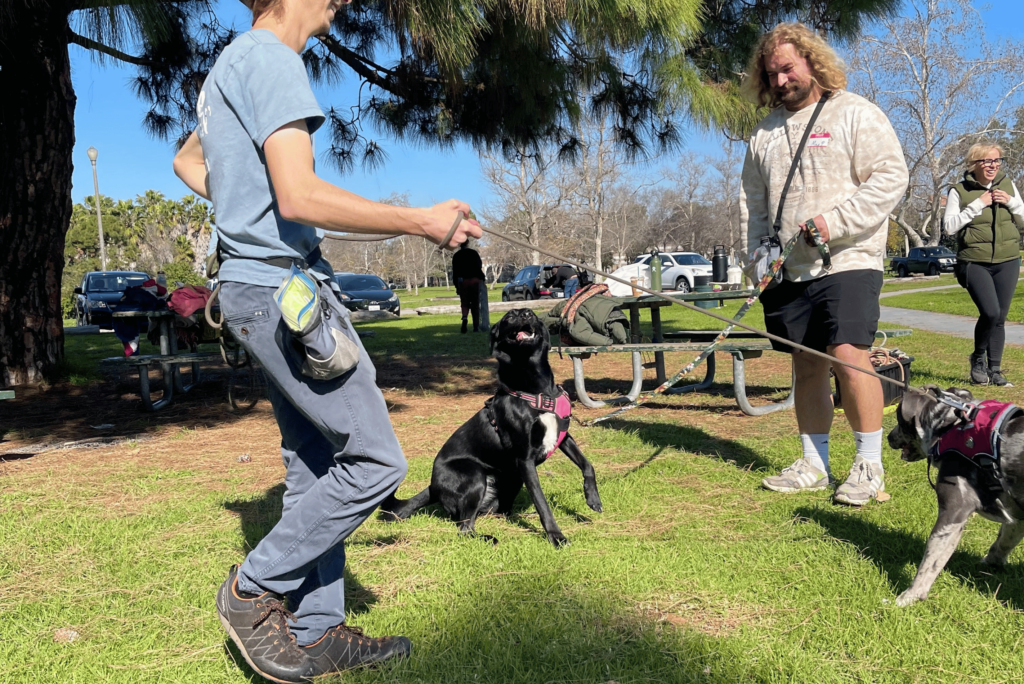
We’re going to share a little of what our workshop included, so you can get an idea of what training with us is like. You’ll also learn a little about why we use the methods we do and how you can make your own training sessions more successful.
Our First Dog Training Workshop Topic: Clicker Training and Shaping Behavior
Our focus for this workshop was Shaping Behavior. Dog training using successive approximations, commonly called shaping, is our favorite way to teach dogs a new behavior. This training method was pioneered by B.F. Skinner and is one of the go-to ways for training animals today. With shaping, you’re breaking a behavior down into multiple steps. As with most training, it all depends on the dog and how much they offer the behaviors needed for shaping.
To help with Shaping, we went over the basics of clicker training. Using a clicker lets your dog know when they have performed the preferable behavior. Once they’ve offered the behavior you’re looking for, you click the moment the behavior is offered, then give a treat. This is called marking. You can use a verbal marker like “yes”, marking the moment the behavior is offered, and of course, a treat always follows.
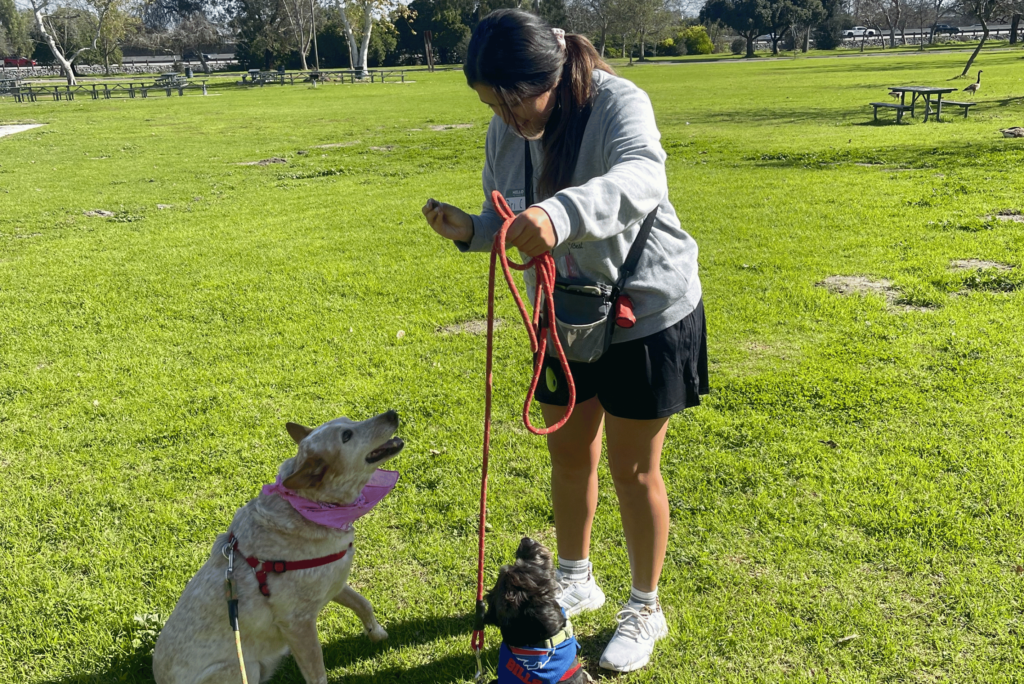
To help the Pet Waggin’ pet sitting professionals understand how clicker training and Shaping work, we organized an exercise. We had them send up a human volunteer who we then… clicker trained. The volunteer stepped away, and the rest of us decided on a behavior we wanted the volunteer to do.
Each time their volunteer performed the desirable action, we would click the clicker to alert them that they were on the right path. It was fun and there were a lot of laughs, but it was definitely a challenge! It helped teach an important lesson about how clicker training works and why your dog may not understand things right away.
The Pet Waggin’ professionals then took what they’d learned and used it to clicker train their dogs to knock over a water bottle. The dogs loved this “game” and didn’t even realize they were being trained.
Relax On A Mat Training
Once everyone felt comfortable with the clicker, we moved on to another often overlooked tool of dog training: Relax On A Mat. We’ve all had times when our dog was getting a little wild and needed to help them relax. Relax On A Mat is a behavior-shaping tool to get your dog to relax around triggers.
We use this behavior for dogs to learn to self-regulate and over time they can relax on a mat in stimulated environments.
Relax On A Mat can’t be mastered in a few hours. We got the Pet Waggin’ team started and showed them how to use the clicker to train their dogs to Relax On A Mat. It’s such a valuable tool for pet professionals and their client’s dogs!
Right and Wrong Behavior
With the dogs on the mats, we addressed the topics of “right and wrong” and “bad dogs”. This is an incredibly important conversation that, as trainers, we try to have with everyone. As dog guardians, we need to remind ourselves that our dogs aren’t “being bad”. They’re acting out of instinct. Many of the behaviors we see as undesirable are the result of their needs not being met and their attempt to express that or our failure to work with them to establish boundaries.
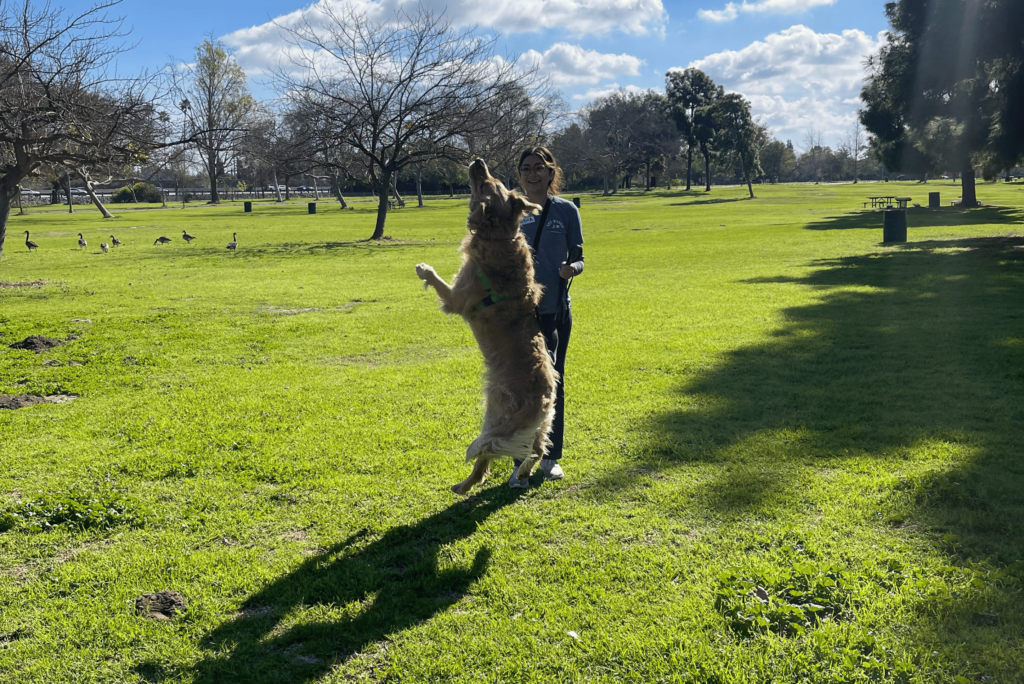
We say it a lot. There are no bad dogs. There are anxious and reactive dogs, but to truly understand why they seem to be “acting up”, we need to determine what it is that we’re missing. Training won’t work if we go into it with the assumption that a dog is bad. Instead, we need to work to find the root cause of their less pleasant behaviors so we can work with them and help them become the best version of themselves.
Our Final Dog Training Workshop Topic: Loose Leash Walking
We certainly covered a lot of ground in our workshop. Next up, we wanted to at least touch on all of the training areas we use Shaping in. And loose leash walking is a big one! We see an unfortunate number of people being pulled down the street by their dogs, and that’s not safe for them or their dogs.
Loose leash walking means there is slack on the leash, and your dog is walking at a similar pace as you. The slack in the leash means you are in control, and you can quickly remove your dog from dangerous situations because you are not struggling to keep up with them.
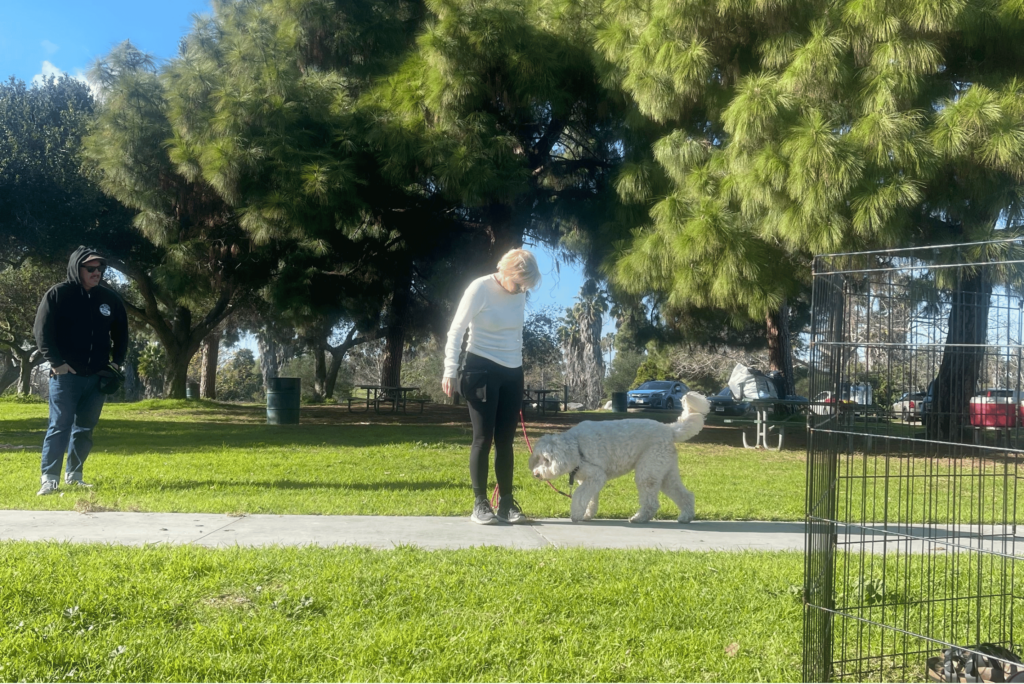
Loose leash walking isn’t normal dog behavior. Dogs like to move back and forth, changing speed and following their noses. We have to teach dogs what we want. This is where clicking and rewarding come in. We click and reward for eye contact, check in (glancing our way), and slack in the leash. Consistency is key.
Loose leash walking is obviously a key area for the folks at Pet Waggin’. We worked with them on getting the dog to make eye contact and how the dog should walk in relation to them. Then we slowly began working on walking using the clicker. We also gave them some troubleshooting ideas for handling boundary-pushing dogs and difficult situations. And of course, we took it one step at a time… just like everything else in dog training.
We had so much fun teaching this workshop! And we know that the Pet Waggin’ team found so much value in it. Supporting fellow local pet professionals is incredibly important to us here at Underdogs. We know that educating our community will only help to create happier dog guardians and dogs in the Long Beach area!
P.S. Looking for a pet sitter or dog walker in the Long Beach area? We love Pet Waggin’ because of their dedication to continued education!
Leave a Reply Cancel reply
Underdogs Long Beach uses force-free dog training methods to build relationships between dogs and owners.
© Underdogs long beach | Legal
